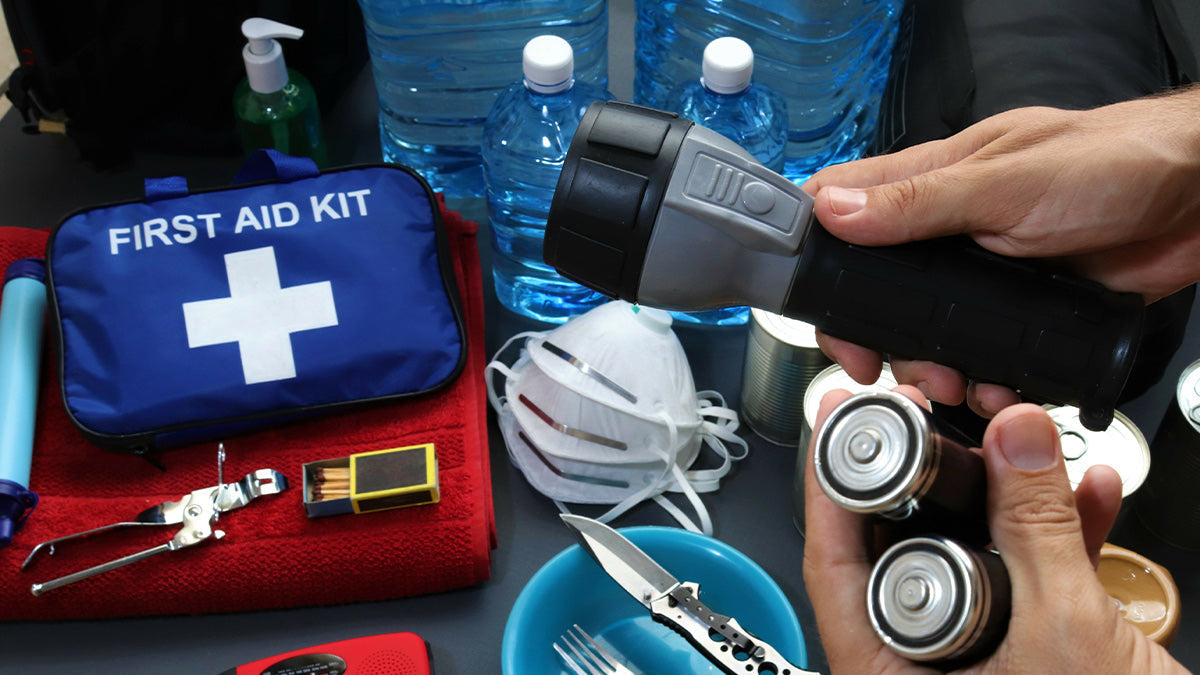We officially entered the “heat season” today…
And while most of us look forward to backyard barbecues and poolside afternoons, there's one downside that often gets overlooked—this is also peak power outage season.
As temperatures climb, electrical grids strain under the weight of millions of air conditioners running simultaneously. Combine that with the increased risk of severe thunderstorms, hurricanes, and tropical storms during the warmer months, and you've got a perfect recipe for power disruptions.
It’s no surprise that over the last decade, the U.S. experienced about 60% more heat season outages compared to the 2000s.
So is your family prepared for when the lights go out?
If you've ever fumbled around in the dark looking for candles or worried about food spoiling in your refrigerator during an outage, it's time to create a proper Power Out Plan for your home.
Let's break it down into three manageable steps that will keep your family comfortable and safe during any power disruption.
Step 1: Assess Your Home's Needs and Vulnerabilities

Before building your power outage kit, take a quick inventory of what actually needs electricity in your home. This step is often overlooked, but it's crucial for effective planning!
Start by asking these key questions:
Does anyone in your home rely on powered medical devices? CPAP machines, home dialysis equipment, or electric mobility aids should top your priority list. These require immediate backup power solutions.
What food storage concerns do you have? A fully stocked freezer can typically maintain safe temperatures for about 48 hours if kept closed, but refrigerated items are at risk much sooner. Consider how much perishable food you typically store.
How will you stay connected? Cell phones, tablets, and laptops all need charging. In longer outages, maintaining communication becomes increasingly important, especially if family members are separated.
What about comfort? While not essential for survival, comfort items like fans in summer or space heaters in winter can make a big difference in how your family handles an extended outage.
Take a walk through your home with a notepad and jot down everything that would impact your family's wellbeing if the power went out. This simple assessment will guide the rest of your planning process!
Step 2: Build Your Power-Out Kit

Now it's time for the fun part—gathering your supplies!
Your power-out kit should be stored in an easily accessible location that everyone in the family knows about. A clear plastic tote works great because you can see what's inside without opening it.
Here's what to include:
Lighting solutions are your first priority. Make sure you include flashlights, headlamps (especially useful for hands-free tasks), and battery-powered lanterns. Pro tip: place a small flashlight in each bedroom so nobody has to navigate in complete darkness.
Power backup options will keep essential devices running. The Grid Doctor 300 is perfect for most families, providing enough power for medical devices, phones, tablets, and even small appliances.
Other practical items that belong in your kit include:
- Extra batteries in various sizes
- Battery-powered or hand-crank radio
- Power banks to keep your phone charged
- Glow sticks (kids love these!)
- Playing cards and non-electronic games
- Battery-powered fans
- List of emergency contacts
If you have young children in your family, make your kit kid-friendly by including comfort items like their favorite stuffed animal or a special book.
Getting children involved in building and maintaining the kit helps them feel prepared rather than scared when outages occur!
Step 3: Create and Practice Your Family Action Plan

A power outage is much less stressful when everyone knows exactly what to do. Your family action plan doesn't need to be complicated—simple is better!
Assign roles to each family member. Even young children can handle simple tasks like being in charge of distributing flashlights or reading a book to younger siblings.
Designate a gathering place in your home where everyone meets when the power goes out. The living room usually works well as a central location.
Make it fun! Power outages can actually be memorable family experiences. Have themed "blackout nights" where you practice your plan while playing games by lantern light. A flashlight scavenger hunt is another great way to familiarize everyone with the location of emergency supplies.
Establish communication protocols for when family members are separated during an outage. Where will everyone meet? How will you get in touch if cell service is spotty?
Find the adventure in the situation. Tell stories, build blanket forts, make shadow puppets on the wall—these simple activities can turn an inconvenience into a cherished memory for children.
Power Outages Don't Have to Be Scary

With these three simple steps, you'll be ready to handle power outages with confidence and maybe even a little fun!
Remember, the goal isn't to stress about potential problems but to be casually prepared so you can focus on enjoying your summer. A little preparation goes a long way toward peace of mind.
Why not take 15 minutes today to start your home assessment? Your future self will thank you the next time the lights flicker and go out!

